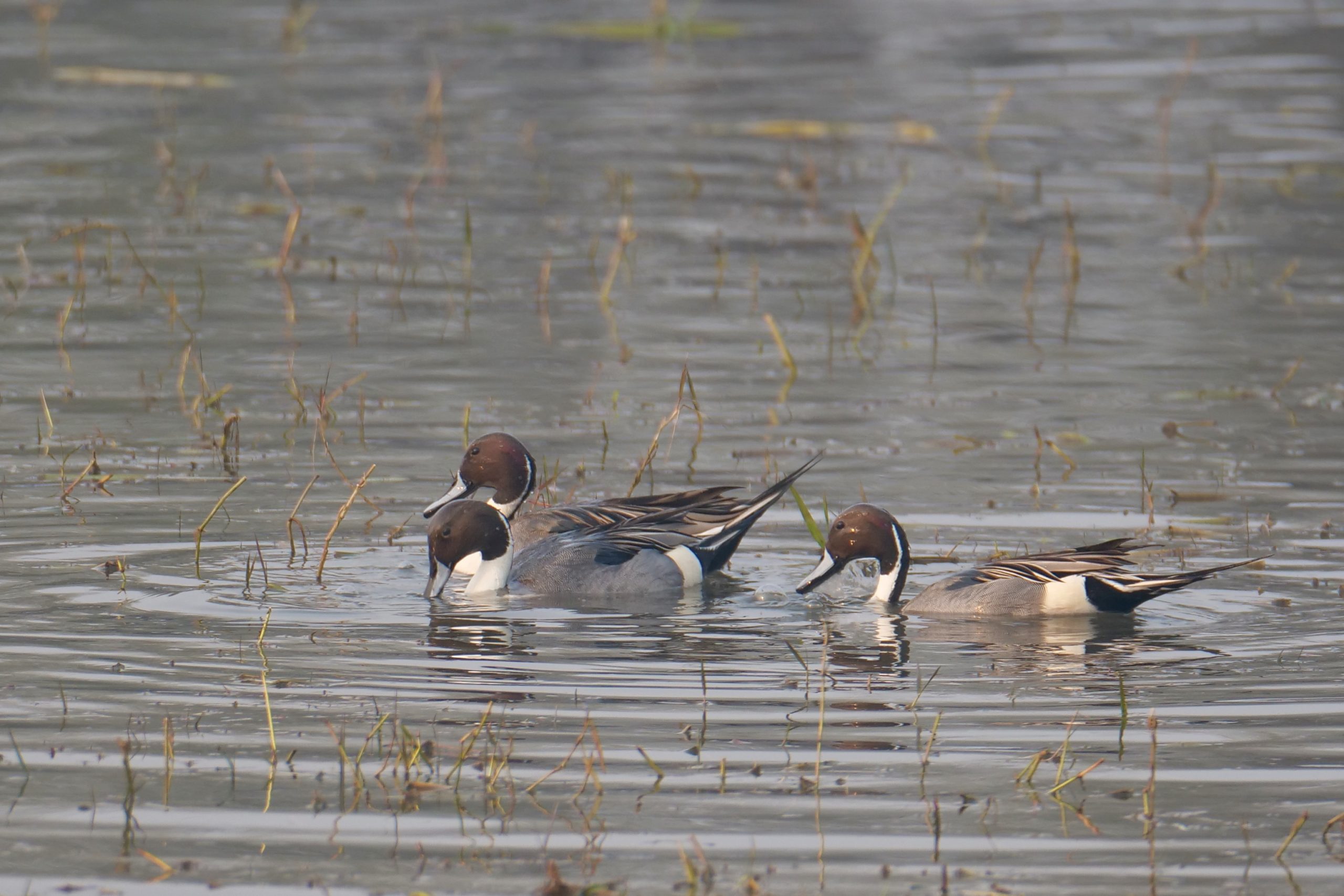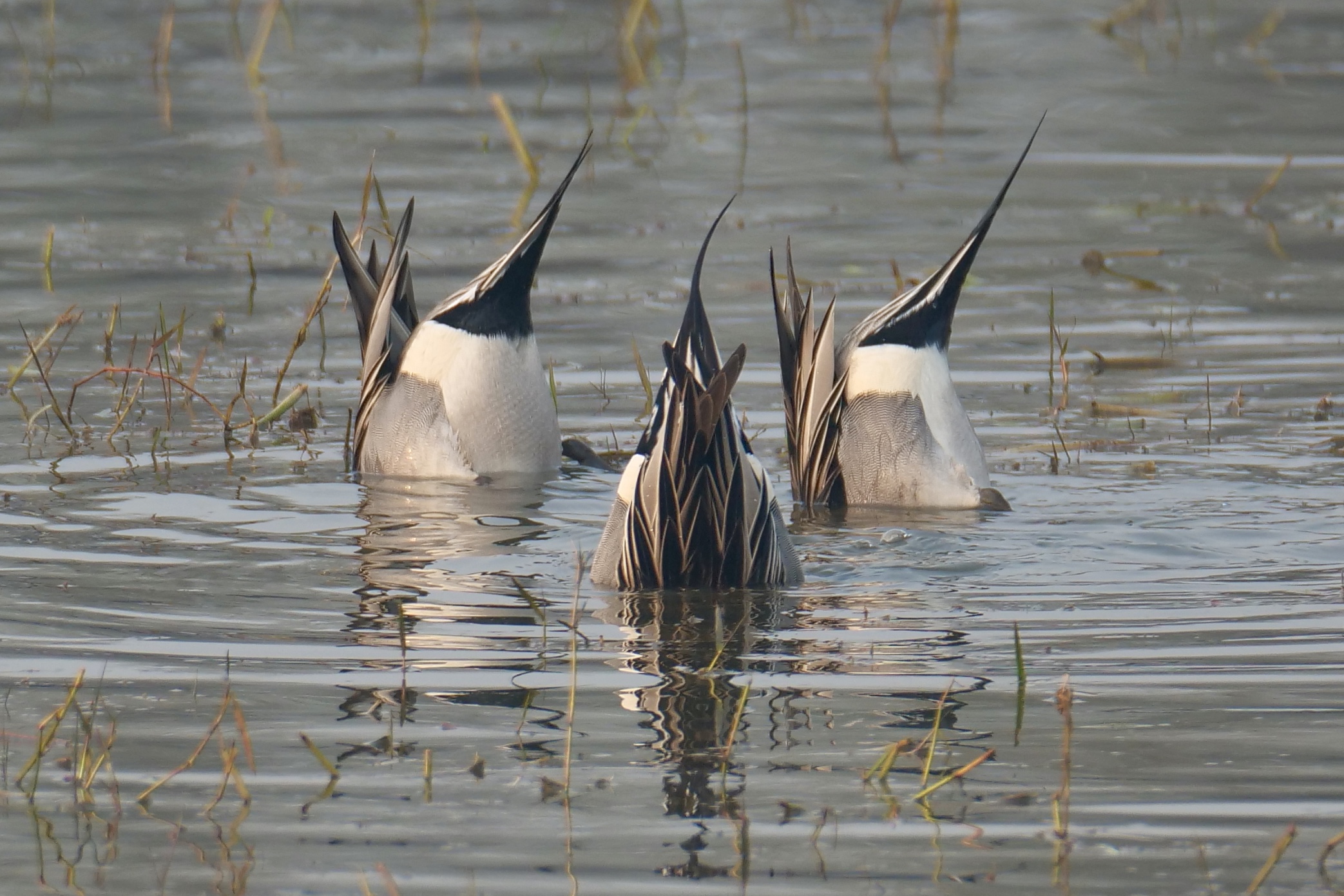Long, prominent tail feathers are a key feature of Anas acuta, the northern pintail.
This handsome, migratory, large dabbling duck really gets around.
The pictured individuals were wintering in Rajasthan, before heading north to their breeding grounds in central or northern Asia, or Europe.
Male northern pintails are much the more visually spectacular gender.
Their heads are very attractive too.
Accordingly, this post will break this series’ general rule of “one image per post”, with a photo of our heroes, more decorously positioned:

Discover more about northern pintails – and see females, too – here.
—
This post’s musical offering is an exquisite, haunting acoustic guitar medley of two Appalachian tunes.
The first has more than one name, but is generally known as Ducks on the Pond.
Its player and arranger is probably the finest exponent of a young genre which draws on a very old one.
Clawhammer guitar was possibly “invented” in the second half of the 20th century by Jody Stecher, but only became a “school” or “genre” in the last couple of decades.
Simply put, it involves applying “clawhammer banjo” (aka “old-timey” or “frailing” or “mountain” banjo) picking technique/picking patterns to the acoustic guitar.
Clawhammer banjo is generally much softer, more leisurely, and often more “bittersweet” than the much younger, now-dominant bluegrass (aka “Scruggs”, after Earl Scruggs) style.
Clawhammer technique is also much more directly connected to the banjo’s African origins.
Click this to read a good explanation of Clawhammer banjo.
So, why bother to apply clawhammer technique to the guitar?
This should answer that question:
Incidentally, if you have a particular interest in international relations and international law (or pétanque – he is, apparently, perhaps its most skilful non-French player) you may have heard/heard of Professor Alec Stone Sweet, or read something by him.
Yes, the same guy!
Steve Baughman is positively evangelical about clawhammer guitar, and in this video he shows how it works:
